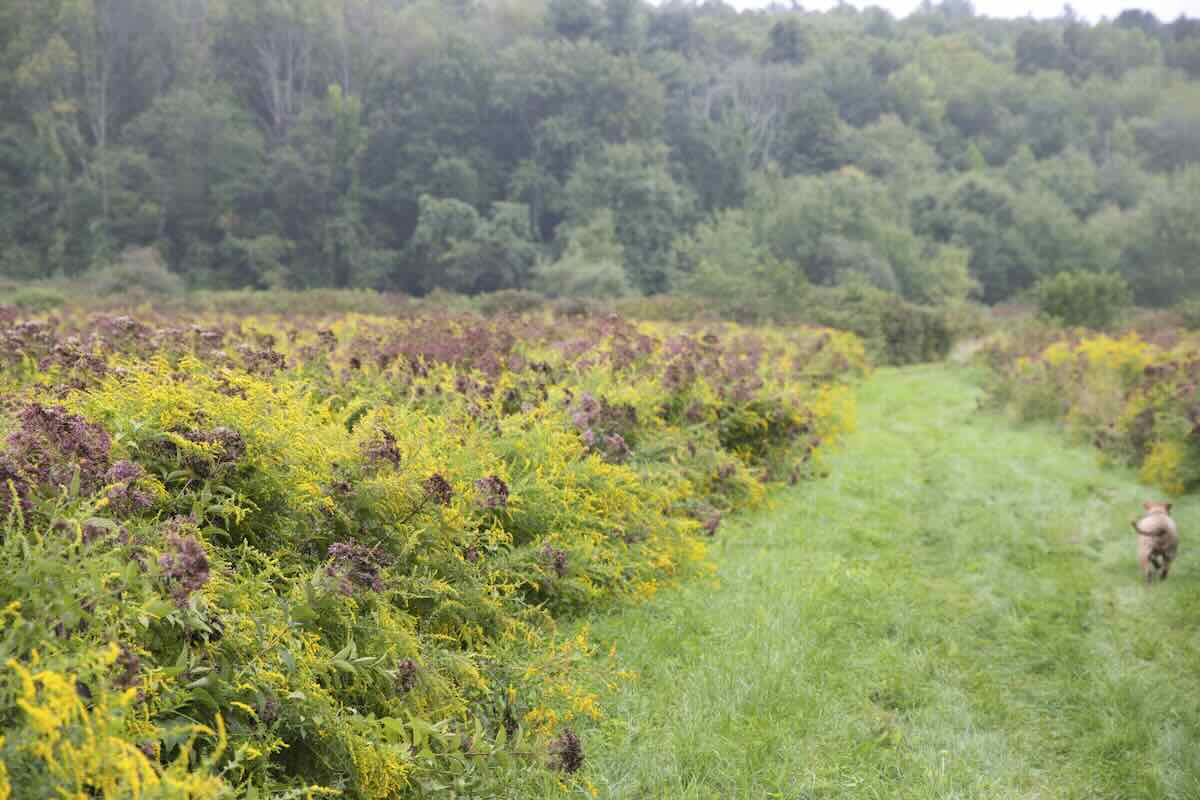
I’m asked again and again by gardeners who have planted a meadow-like area or some other habitat-inspired, naturalistic feature about how to handle its aftercare: about what to do when the picture changes a couple of years down the road and thereafter—when the balance of the plants in their design starts to shift, and there’s too much or too little of something for their liking, or when some unwanted weedy elements find their way in.
I sought some hands-on advice from Dan Wilder, who manages native plantings professionally on thousands of acres of conserved natural lands, and also on his own home-garden scale.
Dan Wilder is a longtime native plant expert, and the director of Applied Ecology for the nonprofit Norcross Wildlife Foundation in Massachusetts, an 8,000-acre sanctuary. He is also a board member of the Ecological Landscape Alliance, a leader in promoting sustainable approaches to the landscape to professionals and gardeners alike. With Mark Richardson, Dan co-authored the book “Native Plants for New England Gardens.”
Note: I inserted some subheadings below so you can zero in on his tips about topics like how different soil prep methods affect the outcome of a meadow, or tackling woody invasives in a meadow, or how to simulate the effect of fire (the natural editor of native landscapes).
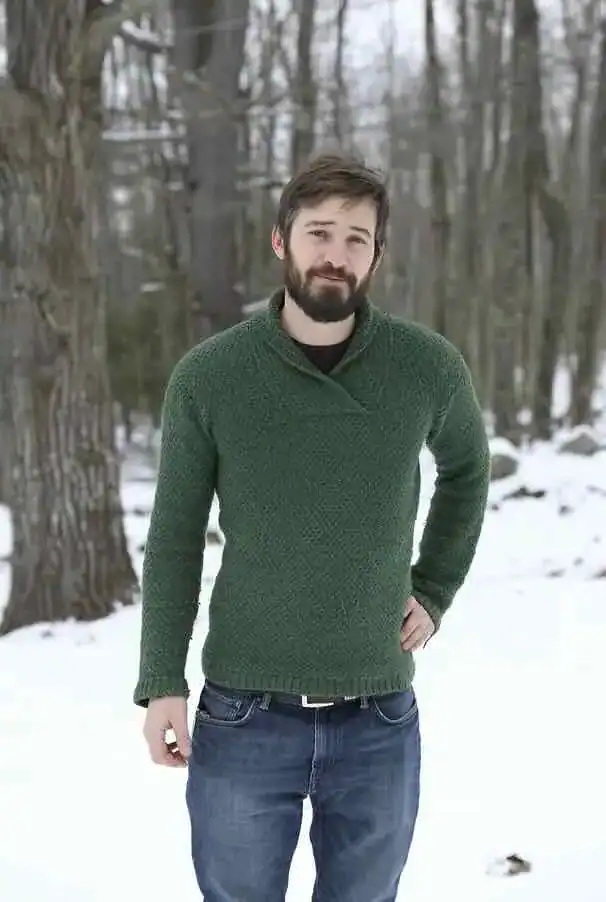
Margaret Roach: I’ve missed talking to you, Dan, and I think of you each time somebody calls me up, as I said in the introduction, and asks me one of those questions. Because with these more naturalistic plantings that a lot of us are excited about incorporating into our landscapes and shifting part of our lawn over to or whatever, even familiar horticultural terms like weeding aren’t exactly the same as they were with our hostas and daffodils [laughter]. Do you know what I mean?
Dan Wilder: Oh, sure, definitely. I mean, we could spend the next hour if we want to, just trying to figure out what a weed is. I mean this, it’s a very kind of personal choice, and so it makes it a really hard kind of decision when you give someone the heads up, “Hey, just go weed that area.” It really doesn’t mean anything. It’s complicated.
Margaret: And I think the other thing is that for a lot of us, we maybe say if it’s a “meadow” or meadow-style planting or some mixture of herbaceous plants, we see the picture on the package or where we purchased the seeds or something like that, and it’s one moment in time that’s being portrayed, right? It’s not the whole life of that planting. And in the mix, or the various ingredients we plant, there’s plants that are annuals and there’s plants that are biennials and there’s plants that are perennials [laughter], and there’s some that live a long time and there’s some that don’t live very long and it’s going to evolve, isn’t it?
Dan: Yes, absolutely. I mean, if you take a meadow as a really good example, a one-year meadow is completely different from a three-year meadow, a five-year meadow, a 10-year meadow. And even that, once you hit whatever stride you’re going to hit at 10 years, a dry year versus a wet year versus the trees on the edges kind of overgrowing it—so many factors can really make this area change on a regular basis. And sometimes for the better, and sometimes it’s a challenge, but it’s a very dynamic system.
One of the running jokes that we tend to say a lot of times is the Northeast meadow is just another name for “not yet forest,” and I think anyone who’s grown a meadow or a meadow planting realizes that if you just don’t do anything to a meadow, eventually it’s shrubs and trees and no longer a meadow. These are dynamic landscapes.
Margaret: Succession, as the hit television show or whatever: succession [laughter]. That’s what we’re watching unfold in front of us is the process of succession where different plants join the community and then begin to dominate the community.
Dan: Yeah. And with those plants and those different stages comes different wildlife. And different wildlife that take advantage of that one-year or the three-year or the 10-year meadow, or getting into those youngest forest stands that we’ll call early successional or thicket habitat, that kind of period where it’s really hard to define if it’s still a meadow or if it’s a forest, yet you get different wildlife at every different stage of this process.
Margaret: So you’ve worked in—as I said in the introduction—at Norcross, you’ve worked in thousands of acres of natural lands, and you’ve also worked on your own home-garden scale, and you worked elsewhere before that in the native plant world. What are the lessons that you take home as the home gardener, when you go to try to figure out how to “weed” or “edit” or I don’t even know what word to use [laughter]? When you manage your home plantings, what are some of the aha’s you’ve had ,or what are some of the things that we want to tell people about guidance and so forth that are front of mind for you?
Dan: Yeah, I tend to start pretty broad, and then narrow down as I go, as I think through these concepts. For me, the first question I ask folks, and this includes myself when I’m in an area, is what is my goal? What am I trying to accomplish?
And then even a little bit more narrow than that is what is my goal for this site? For this area I’m standing in? I mean because even at my home-gardener scale, I’ve got the veggie garden that’s right outside of my back door, and then I’ve got the kind of slightly more wild kind of what I think of as my woody garden where I’ve got things like blueberries and raspberries and those sort of still cultivated, but a little more kind of less managed areas. And then I’ve got my area I think of as my kind of back lot, which is not unmanaged, but is nothing like a vegetable garden.
So your goals are obviously very important, but your goals are going to shift drastically depending on where you’re standing. And I see that at Norcross, too. I have thousands of acres. You don’t manage thousands of acres in any sort of monolithic way.
Every area kind of gets a whole new set of goals. There are general ones—for me it’s wildlife, it’s habitat, it’s native species. Those are kind of the really broad goals that don’t normally change drastically, but the kind of specifics of the site can really vary greatly from area to area. And I think when people start looking at it that way, you realize that common milkweed [Asclepias syriaca] might be an ally for me in one of my more kind of naturalistic meadows, but maybe doesn’t belong in my vegetable garden. And looking at specific areas can make a big difference.
Margaret: So common milkweed you just cited because it is an enthusiastic grower; it will take up a lot of space. It’s a tough one. I hear that a lot about certain goldenrods. People are like, “Oh, my whole meadow is becoming goldenrods.” People are panicking and they want to know what to do, and that and milkweed are two of the ones I hear a lot about among herbaceous things.
Dan: Certainly, and thinking about these kind of site-specific goals, I have certain meadows where if roughleaf goldenrod, which I think of as the most vigorous goldenrod out there, I have some meadows where if rough-leaf goldenrod [Solidago rugosa] started taking over the meadow, I would consider that such a success. It would be rough-leaf goldenrod in place of the mugwort [Artemisia vulgaris] that my meadow currently looks at.
I have other areas where if rough-leaf goldenrod started taking over, I’d be managing it out because I’d be worried it would be outcompeting the showy goldenrod [Solidago speciosa] and the bird’s foot violet [Viola pedata, below]. And this is the same plant in areas that are really not too far away, but it is very specific to what I’m trying to accomplish in that area.
And I think this is where editing really starts to make sense as kind of our choice of word, because it really does become a choice of the individual, and of the landscape. And you’ve really got to not always do what the landscape tells you, but you sure ought to listen to it before you make up your own mind.
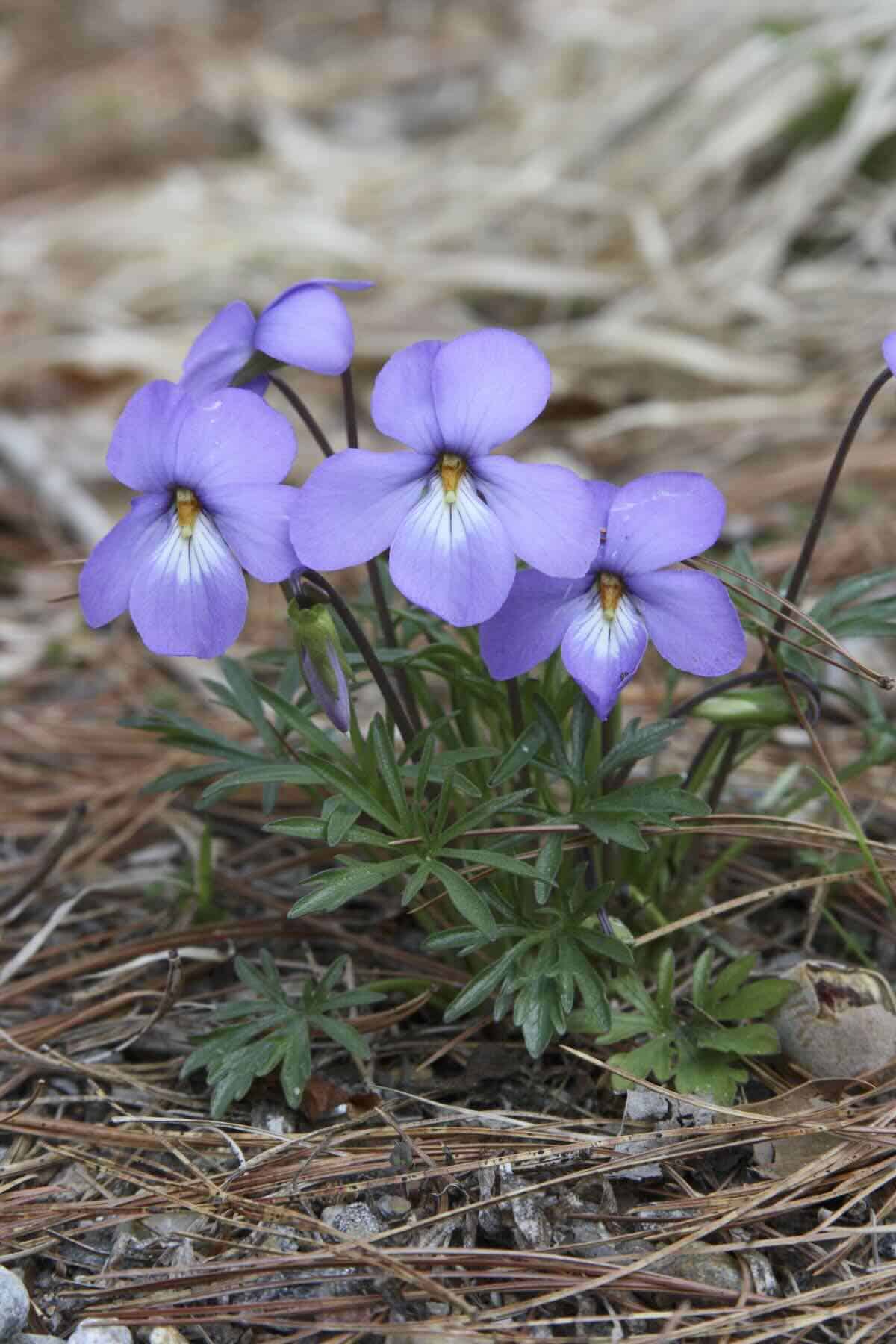
What do I do? Do I mow? I mean, I know you have a lot of expertise in burning, for instance, a more traditional method. How do you know what to do when you encounter one of these? Is that the next step, after you’ve decided what your goal for that area, is to know tactically?
Dan: Yes, I think it is, but I think even before you get into what to do for it, you got to look again at what you’re trying to accomplish in terms of that specific species. So let’s say you’ve got that rough-leaf goldenrod showing up. Are we trying to make the goldenrod go away entirely? Are we trying to remove it, or are we trying to simply knock it back so that we can keep the diversity of other species kind of up there? And a lot of time that comes down to the difference between say a weedy native species versus an invasive species appearing in the meadow. When mugwort shows up, I try and make it go away, end stop. When rough-leaf goldenrod comes up, more often than not, I want it there and I want it to stay. I just want to see less of it.
And that’s where I find that instead of kind of weeding it out in the traditional sense, as in grabbing it by the stem and pulling it out or uprooting it comes in, I am more often finding myself going into a kind of…I’m going for cutbacks. I’m getting in there and kind of cutting this thing back with the goal of not really disturbing the soil as much, but really knocking the plant back.
I’ve got a wet meadow that I work in where rough-leaf goldenrod is quite vigorous and we’ve got a population of fringed gentian [Gentianopsis crinita] that we are trying to kind of manage for. And we will go into that meadow usually twice a year with brushcutters, and we will just go after the big, fat, chunky kind of populations of rough-leaf goldenrod, and we’ll just hit them with the brushcutter and cut them down to size. We don’t actually try and remove them, but by doing that, all the plants around them all of a sudden have this new competitive edge in that they’re getting the sun, and the rough-leaf goldenrod isn’t, because it doesn’t have any leaves left.
And it starts to really kind tip the balance against the species that you’re trying to kind of edit down. And I find it takes a lot less effort from me to kind of get into that area with a brushcutter and just start hitting the big patches of rough-leaf goldenrod. I can do that whole meadow in a matter of an hour and that’s one person on a pretty large meadow, and it’s very doable.
If I was actually trying to remove that plant or weed it out by hand or even go after every rough-leaf goldenrod I saw versus just those big chunky patches, that’d be a matter of a week. So I try and really kind of go for the least amount of effort for the highest gain, and in this case I find cutting back is really effective. [Below, selective cutting at Norcross.]

Dan: He’s great.
Margaret: He’s great, and he loves his string trimmer for that. He’ll go in and edit out—not dig out, but do what you just said: zap them, the unwanted. He’ll do his editing with the string trimmer, and give the plants around it, as you just said, more of the light and the room to take advantage, and the undesirables are not photosynthesizing. And he finds that to be an effective tactic and like you said; very quick, relatively speaking, and less laborious.
Dan: Yeah, yeah, I agree with him wholeheartedly. I think I might shift the string trimmer to more of one of those kind of star-bladed sort of brushcutter heads. I like those a little bit more. It gives me the option of letting things go a little further without having to worry about the string not doing the job. That, and I tend to trying to reduce the plastic in the garden when I can and the metal heads are great to work with.
tackling woody invaders in a meadow
Margaret: Yeah. O.K., so that’s one example. What about when it’s a woody thing that comes into my meadow? I have a lot of blackberry or raspberry or something, Rubus.
Dan: Sure. Again, we’ve got to define our locations, but sometimes I’ll do the same thing I just described: Get in there with that metal-head brushcutter and just go through things individually. But when we start looking at larger meadows, and especially blackberry being a common example, a standard kind of mowing can really do a lot. And if you time it right and kind of do it correctly. It can really favor the plants you want to favor.
Let me give you some more specifics. Assuming you’ve got a larger meadow, I joked before that a meadow is just another name for not yet forest [laughter]. The more often you mow that meadow, the more it’s going to favor the herbaceous spectrum. And even taking that further, if you mow it more and more often as in on an annual basis or even more, you’re going to favor the shorter-lived herbaceous spectrum. And the less often you mow it, the more you’re going to favor the longer-lived plants, and this ends up being our woody species.
So if you mow a meadow every single year, you’re really not going to have any woody species to deal with. Every time they start growing in there, the mower’s going to knock them down and they’re really never going hit that competitive edge. I don’t particularly like mowing a meadow annually. I like to kind of spread my mowings out, but we can use the exact same concept.
Oftentimes what we do is we look at the kind of meadow and instead of saying we need to mow it every year, or every three years, we look at the meadow and say, do we need to mow this meadow? Are there pine trees that are starting to come up to size? Am I seeing that blackberry that’s starting to spread into areas where I’ve got a lot of cool herbaceous plants I’m trying to favor? When I start seeing that, I’ll break out the mower and I’ll go ahead and mow.
I often try and kind of mow the meadow in sections over a period of several years, so that especially if it’s a larger meadow, I can leave sections of it standing for two or three years and be mowing other sections, kind of working my way across the meadow. The general rule is for a large meadow: Mow a third of it every year, and that means it takes you three years to mow the full meadow, but it’s this kind of one-third process that always leaves two-thirds of the meadow standing. That’s got the great advantage of leaving a lot of wintering wildlife habitat up.
It also allows you to kind of see the meadow throughout different stages. You’ll have a one-year mowed, a two-year mowed, and a three-year mowed section, and you can kind of see what’s working for you.
If you’ve got the time and the ability to, I will not mow the edges of my meadow nearly as often, and that’s where I will kind of specifically go in there with that kind of handheld brushcutter, because I often like to let the shrubs grow a little bit more thickly and larger kind of on the edges. I’m looking for the center of the meadow being more of your standard meadow kind of, dominated by herbaceous plants, and these edges having, for me, it’s often highbush blueberries, hazelnuts, serviceberries, spiraeas—and these are plants that I will favor on the edges.
You often hear this referred to as a soft edge, which can sometimes be the most beneficial part of the meadow from kind of a habitat point of view or an ecotone point of view. But that again comes down to your goals and your goals for the site and your time, because maintaining that soft edge does take more time and effort than just a general mow. And when we started looking at large areas, you kind of have to pick and choose your battles.
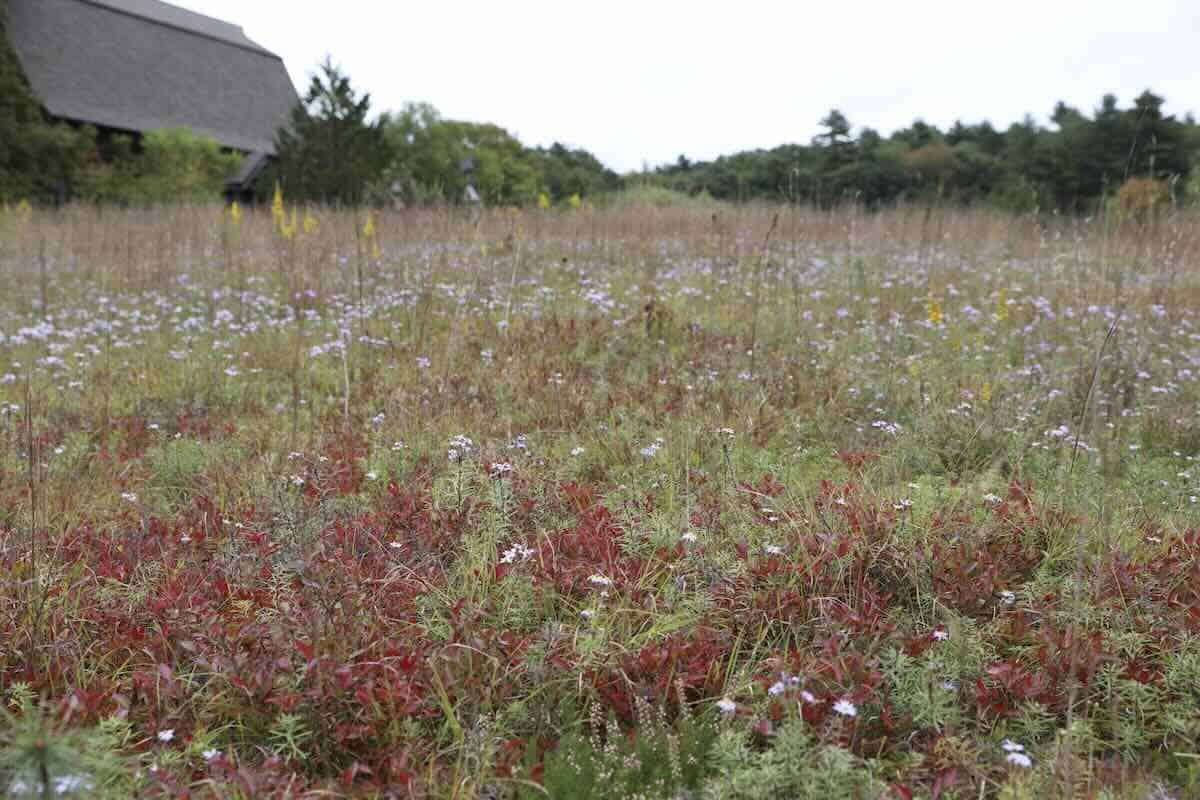
Margaret: Yeah, and as I said before, you, because you’re working in large areas, you’re able to use nature’s traditional method. You’re able to use fire in some cases, controlled burns, to manage some of these areas, and we can’t necessarily do that in our home landscapes, but fire, there’s lessons from it that you’ve taken, I assume that we’ve interpreted from it, yes?
Dan: Oh, certainly. I mean it’d be unrealistic to tell everyone to go out and burn their landscape, although I’ve been surprised at how applicable it is sometimes on a smaller scale for certain individuals. I learned to burn landscapes through a guy who pretty much took me to his place and burned his front yard and then his backyard. Not exactly a common situation, but he had the skill to do it.
But we’ve learned a lot; fire is a much more kind of delicate tool in terms of picking and choosing species on the landscape than I ever first thought it would be when I got into it. And it makes sense now that I look back at it. It’s not the fire that’s picking as much as it’s the plants and the animals that have adapted to live with it.
So when you put fire on the landscape, you have certain species that really thrive and other species that don’t. So for us, fire often is put into these landscapes where we have these kind of unique and often rare fire-adapted species. We usually hear to these referred to as barrens—pitch pine barrens is kind of the classic example, but you’ll find heath dominated landscapes with blueberries and such, or grasslands with little bluestem [Schizachyrium scoparium], big bluestem [Andropogon gerardi], other species like that. A lot of these are fire-adapted landscapes, and we can take these lessons and bring them into our own landscape. Fire is disturbance on the landscape, and I actually manage at least one area that is a fire-adapted landscape that we can’t burn. And we go in there with our brushcutters and we kind of pretend we’re fire for the day.
What we do with that is we’ll go in and we’re brushcutting, and we are cutting white pine and we’re cutting birch and we’re cutting species that we know don’t respond well to fire and we’re cutting them hard. And the blueberries and the pitch pine and the oaks that we see are generally left behind, and though we are not fire, we are kind of pretending we are. And what we’re trying to do is recreate what would’ve happened if it were fire running through the landscape, where the pitch pine and the oak and then a lot of these little bluestem is perfectly adapted and will either survive the fire or bounce back from it readily, where the white pine and the birch, they’re more adapted to just growing quickly and not necessarily responding well to a disturbance like fire. [Above, a meadow managed at Norcross by pretending to be fire with mowing. Below, a mesic site managed by editing with brushcutters.]
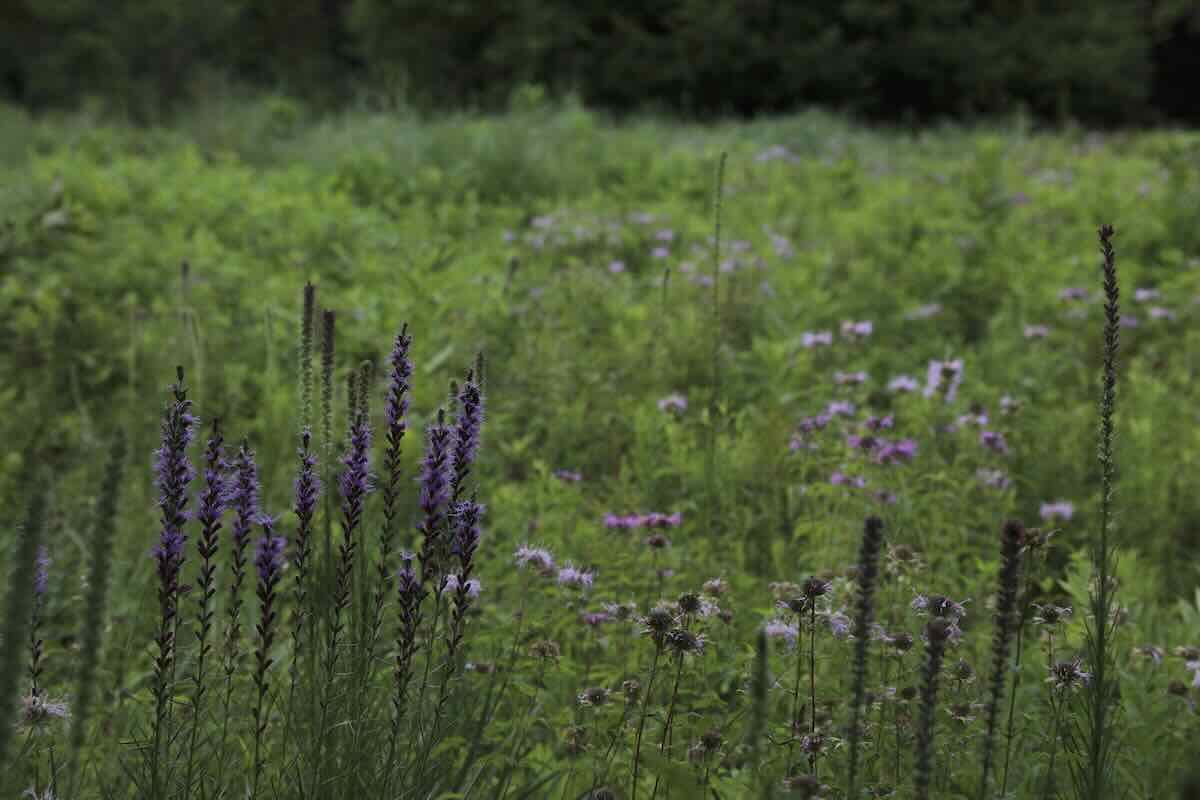
Margaret: Interesting. When you’ve been doing various plantings in your home landscape, native plantings and so forth as well as the looser, wilder areas, is the way that you prepare like when we transition, say, an area of lawn to something more diverse, also going to help or hurt what’s going to happen later? I mean, is that also a part of it: how well we prepare?
Dan: Yes. Absolutely. And this is—I don’t want to be a broken record here—but coming back to what is your goal for the site? Let’s take that lawn as an example. If my goal is, let’s say we’re going to kill the lawn and plant a meadow of sorts. Am I planting a rich, diverse meadow? In which case I might want to smother my lawn. I want to keep that organic matter on site. I want to be able to kind of really encourage this rich, diverse meadow that I might see in say, one of my more mesic sites.
Or am I trying to create a sandplain grassland, something where it’s little bluestem-dominated, maybe some blueberries, probably a lighter plant spectrum, but perhaps associating with a kind of higher diversity of certain types of wildlife? If that were my goal, then I would probably get in there with a sod cutter and remove that lawn and remove the organic matter, and I want a thin soil. The advantage to that is that there’s a limited number of plants that will grow in there, and that also includes the invasive species that don’t do so well in those conditions.
So how you prepare your site and how much material you left on site, how much disturbance you do to the soil, those are all going to affect the future of that landscape. It’s where sometimes you just get out there and start getting to work on the landscape and seeing what the landscape responds to. And this is often necessary when you’re working in areas that have been manipulated for a long, long period of time and they’re not really giving you those clues as to what they kind of want to be anymore.
But if possible, what I like to do is get onto the landscape, take a look at what’s growing there already: What’s doing well, what’s doing poorly, what can I learn from the clues on the landscape? And then take those clues and try and figure out what would do well here that would also support my personal goals.
If I’m trying to grow food in a really thin soil, then I’ve either got a lot of compost to bring in, or maybe I want to grow blueberries that actually do well in thin soils, versus am I trying to put on a show and do something really floriferous and beautiful, in which case whether you’ve got a thin soil or a rich kind of mesic soil, you’ve got options. You can really kind of pick and choose.
One of the real big things that I kind of think a lot about these days is soil disturbance. If the soil has not been disturbed historically, then I’d like to keep it that way. I’m not going to till and dig as heavily in untouched soil as I would in say an old farm site, because that often tends to lead to more challenges that you have to work with.
Really this is the theme of the day: What are your goals and what are your goals for that site, and let that really help to guide you. That also means that some weeds are not weeds, depending on where you’re looking [laughter], which is really nice. It’s nice to call a common milkweed an ally and say, I don’t have to work against this plant.
Common violet is I think my best example of that. I spent years in the hort industry being told violet is a weed and weeding it out of gardens, and it is absolutely one of my favorite. I don’t think I could call it a weed anymore, but let’s jokingly call it my favorite weed. It’s a lovely little plant that really doesn’t deserve to be weeded out. I’ve never seen a take over anything. It’s just always an ally and I don’t really know why I spent a decade weeding it. [Below, common blue violet, V. sororia.]
Margaret: I just wanted to ask, besides the violet, are there any others? I mean the other day we were emailing and you showed me an incredible native lily that I’d never seen. Anything else that you want us to be on the alert for that you’re particularly in love with at the moment besides your violets and that lily; I can’t remember the species of lily, I’m sorry.
Dan: Yeah, that was wood lily [Lilium philadelphicum]. It’s a lily for the dry kind of barrens communities. You tend to think of lilies and wet sites. They mostly are, but that one was an upland lily.
Let me give you a few of my favorite plants that I was once taught were weeds that I think people should take a second look at, because I think that’s a really kind of applicable example. We talked about the common violet. That’s a great one. The American self-heal sometimes called heal-all, Prunella vulgaris, a lovely species. I believe we’ve talked about that one before.
I would also say that if you are the sort of person who says goldenrods are weeds, I would tell you to look deeper into the different species of goldenrods and realize that some of them certainly can be considered weeds and some of them are phenomenal garden plants, and they’re not all the same.
That is certainly true for the goldenrods as well as the asters. There’s some lovely ones, there’s some weedy ones. Pick and choose which ones belong on your landscape.
Same story for milkweed. I think most people are more familiar with common milkweed versus butterfly milkweed, but if you’re not familiar with the fact that there’s different milkweeds around, go get to know them. They are absolutely lovely.
Margaret: Yes, yes, yes.
Dan: And one final one, just to throw a woody into the mix: Our native steeplebush, Spiraea tomentosa, is a plant that can grow in gardens, it can grow in wild places. It can be a meadow plant as a woody species. It’s a great meadow plant. It could be a part of a wooded edge. As ageneral rule I was told is that the native spiraeas just don’t have much compared to the Asiatic species. I think I can flip that around these days. Nothing wrong with the Asiatic ones. They’re actually quite lovely, but the native ones are just as nice and they don’t get the same level of credit. So go check out steeplebush.
Margaret: Some good how-to and some plant recommendations from Dan Wilder. Thank you for making time today to talk about this, and I hope it won’t be as long between conversations as it has been this time. Thanks, Dan.
Dan: Thank you so much, Margaret. Reach out anytime. It’s always a pleasure.
(All photos courtesy of Dan Wilder; used with permission.)
prefer the podcast version of the show?


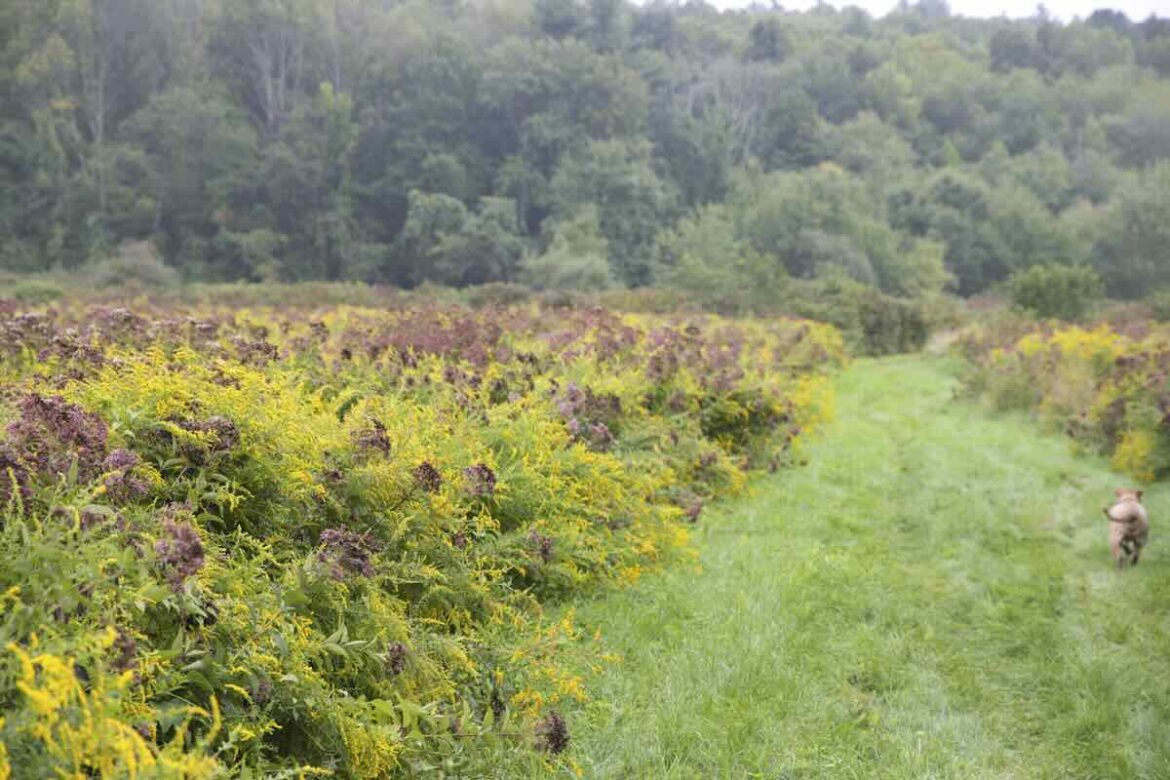

Comments are closed.